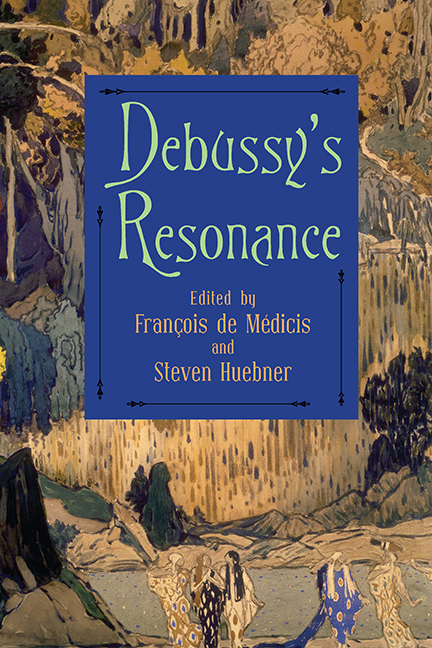Book contents
- Frontmatter
- Contents
- List of Illustrations
- Acknowledgments
- List of Abbreviations
- Introduction
- Part One Historiographical and Editorial Issues
- Part Two Style and Genre
- Part Three History and Hermeneutics
- 10 Debussy and Japanese Prints
- 11 “Les sons … tournent”: Debussy, the Waltz, and Embodied Hermeneutics
- 12 Secrets and Lies, or the Truth About Pelléas
- 13 Vertige!: Debussy, Mallarmé, and the Edge of Language
- Part Four Theoretical Issues
- Part Five Performance and Reception
- List of Contributors
- Index
13 - Vertige!: Debussy, Mallarmé, and the Edge of Language
from Part Three - History and Hermeneutics
Published online by Cambridge University Press: 27 July 2019
- Frontmatter
- Contents
- List of Illustrations
- Acknowledgments
- List of Abbreviations
- Introduction
- Part One Historiographical and Editorial Issues
- Part Two Style and Genre
- Part Three History and Hermeneutics
- 10 Debussy and Japanese Prints
- 11 “Les sons … tournent”: Debussy, the Waltz, and Embodied Hermeneutics
- 12 Secrets and Lies, or the Truth About Pelléas
- 13 Vertige!: Debussy, Mallarmé, and the Edge of Language
- Part Four Theoretical Issues
- Part Five Performance and Reception
- List of Contributors
- Index
Summary
Trois poèmes de Stéphane Mallarmé
In 1913, nearly twenty years after composing the Prélude à l'après-midi d'un faune, Debussy returned to the poetry of Stéphane Mallarmé in search of song texts. All three of the poems he chose have something to do with the nothingness of thin air. Each suggests a rhythmic movement of the air: the breathing in and out of a sigh (Soupir), the waving back and forth of a fan (Éventail) and, in the middle of the triptych, the words of a lover who knows their futility even as he speaks (Placet futile). Not only do these poems evoke the movement of air, each draws attention to itself as an object made of air, a poetic conceit to which Debussy responds with music preoccupied with its own evanescence. These late settings of Mallarmé thus reflect upon an aesthetic principle that shapes Debussy's music as a whole, offering, in exemplary and exquisite miniature, a musical counterpart to Mallarmé's poetry, acts of saying that draw attention to the “nothing” of which they speak so eloquently (for the poems and their translations, see appendix 13.1).
The first song of Debussy's set is “Soupir.” Mallarmé's poem consists of a single sentence, rising and falling like the inhalation and exhalation of breath that it suggests. It is shaped around a central axis, a transformative moment of reversal marked by the repetition of the phrase “vers l'Azur” which ends the first half of the poem (lines 1–5) and begins the second (lines 6–10). This key moment is reinforced by the punctuation (an exclamation point followed by a dash), which introduces a hiatus but, at the same time, carries one half of the poem into the next. The highpoint of the poem's trajectory is thus marked by a momentary silence and suspension of motion. As Marie Rolf demonstrates in her detailed study of this song, the reflective symmetry of Mallarmé's poetic arc is manifest at both a structural and semantic level. The rhythm and enjambment of the two halves, flowing toward and away from this central point of repetition, reinforces the poetic imagery itself, which hinges on the idea of rising and falling.
- Type
- Chapter
- Information
- Debussy's Resonance , pp. 366 - 392Publisher: Boydell & BrewerPrint publication year: 2018

